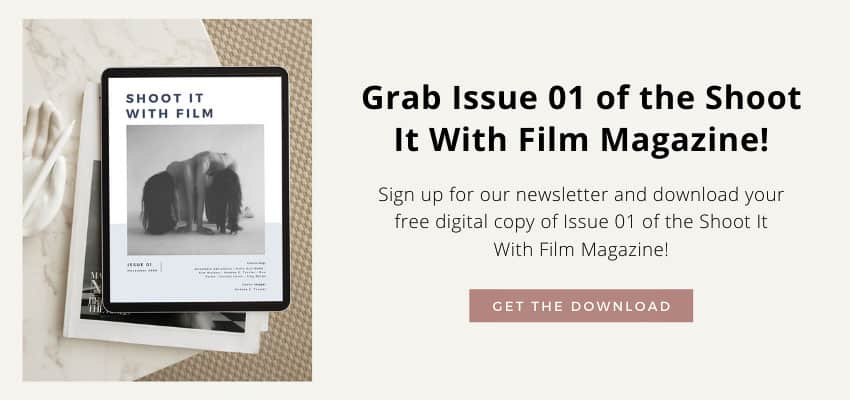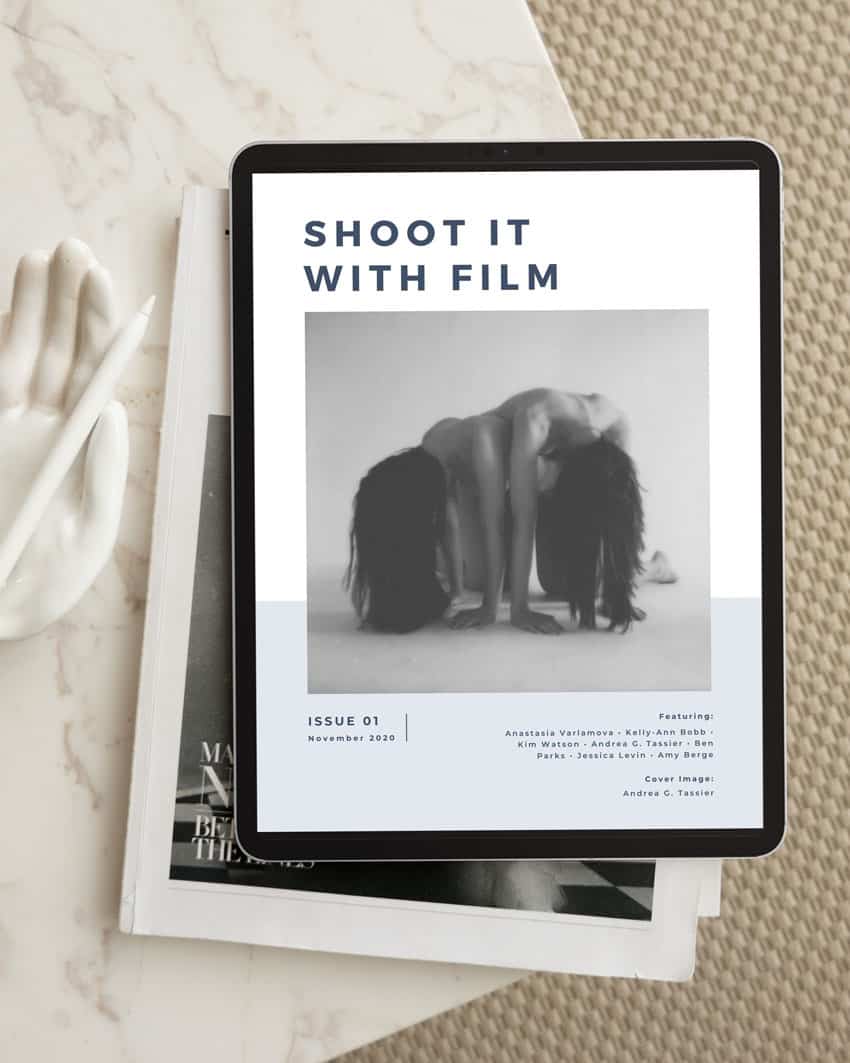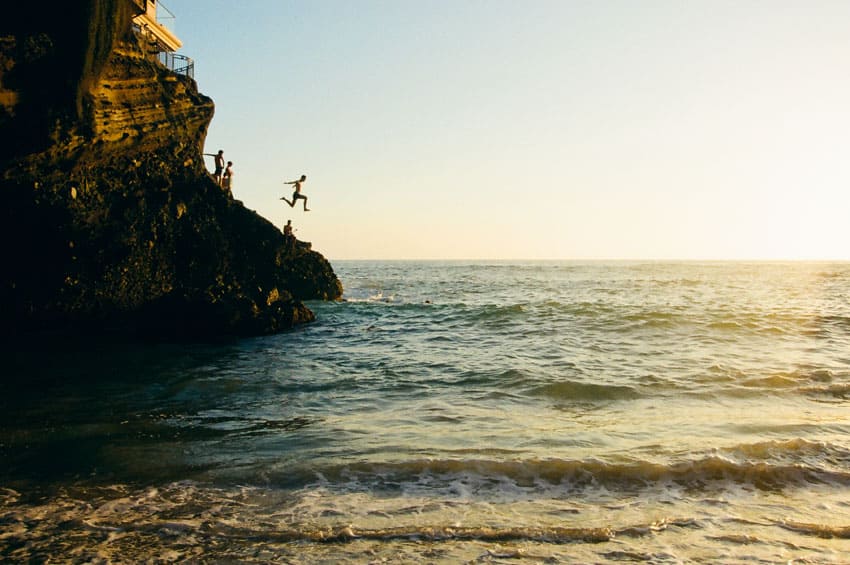
Written by James Baturin
The square image has grown in popularity with the advent of Instagram, but in the film world, square format photography has been around for a long long time.
Some of the most iconic medium format film cameras, such as the Hasselblad 500 series and the Rolleiflex TLR, shoot square images, rather than the more traditional rectangular aspect ratios we see in say 35mm film.
While a lot of the rules of photography will apply across all formats, the square frame provides opportunities to break some of these rules, and has some rules of its own that can help you take strong images. I personally shoot mostly in square format as it suits my eye creatively.
If you’re looking to start shooting square format, or are struggling to do so well, here are 6 square format composition tips I’ve learned in my time shooting in this unique format.

Square Format Composition Tips
1. Simplify Your Compositions
As someone who’s drawn to minimalism in photography, this could be my bias showing through, but there’s something about square format that just lends itself to simplicity.
Having a frame that’s equal on all sides means less room inside for your subject matter, so you really need to be intentional with choosing what to include (or maybe more importantly, what not to include) in your frame.
If you are shooting color film, look for images where there are only a few colors present to avoid distraction, or shoot in black and white to emphasize elements other than color. You can also use things like fog to help isolate your subject and simplify your compositions.
Whatever your subject matter in square format photography, keep it simple and to the point, and your images will be much more effective.



2. Look for Symmetry
A square frame is equal and balanced on all sides, which lends itself well to compositions that involve symmetry. Look for opportunities to split the frame equally on both sides with similar shapes, patterns, or reflections.
Placing the horizon line horizontally through the middle of the frame, along with a reflection works well for this, or try an upside down double exposure with the subject overlapping in the middle of the frame.
Symmetry can be used well in other aspect ratios too, but the square frame presents some unique opportunities for this technique.



Related: 35mm vs 120: Choosing a Film Format
3. Rule of Thirds (And Almost Rule of Thirds)
The rule of thirds is one of the most common “rules of photography,” generally speaking and can be applied to any aspect ratio. However, being a square, I think the rule of thirds applies especially well to the 6×6 frame.
Perhaps it’s because when you divide the square frame into thirds vertically and horizontally, you end up with nine equal quadrants that give you a lot of versatility as to where to place your subject.
Whatever the case, placing your subject on the line of one of the “thirds” of your frame can be an effective way to emphasize your subject.
As with any rule of photography, there are exceptions to it, and sometimes a composition calls you to break the rule. In my experience shooting square format compositions, there are times where placing the subject on one of the “thirds” doesn’t work as well as placing it “in-between” one of the thirds. So for example, placing the subject closer to the edge of the frame, or just off center of the frame.
For me this has been more of an intuitive call, and just going with what “looks right” in the moment. But I think square format gives opportunities to place your subject in unconventional places in ways that maybe more traditional formats don’t.



4. Center Your Subject
Generally speaking in photography, you don’t want to put your subject directly in the center of the frame. While this is mostly true in more traditional rectangular aspect ratios, once again I think the uniqueness of the square frame provides opportunity to break this general rule, and in some cases calls for it.
If I were to take a guess as to why this is, I’d say it has something to do with the way the square format photography, with all sides being equal, keeps the viewer’s eye in the frame.
The space around a centered subject in a square frame will be relatively equal on all sides, and so the viewer’s eye is always brought back around to the subject.
Traditional rectangular aspect ratios, on the other hand, tend to move the viewer’s eye side to side or up and down, which means a centered subject in a rectangular frame often gets lost in empty space as the eye leaves the frame.
Placing your subject in the center of the frame in square format photography can be an effective way to emphasize your subject.


5. Make Use of Negative Space
In the same vein as keeping square format compositions simple, use negative space to draw attention to your subject in 6×6 photography.
One of my favorite compositions to use in landscape photography is to have the subject (often including the horizon line) along either the top or bottom third of the frame, with negative space occupying the remaining two thirds.
Rather than just being empty and nondescript, the negative space points to and emphasizes the subject.
Sometimes, I will even add a bit of a gradient or vignette to the negative space which further leads the eye in the direction of the subject.
This is another rule that also has general applications to all aspect ratios, but I think the square frame provides unique and exciting opportunities for using negative space well.


6. Layers
My final tip for square format film photography and compositions is to layer your image, having foreground, middle ground, and background elements included.
With square format having a tighter frame side to side, you have less room to include things in your image on the horizontal plane. As a result, square format forces you to think of your composition more in terms of three dimensional depth, with foreground, middle ground, and background layers creating interest to your image and leading your viewer into the frame.
A good technique I’ve used when I need to create an interesting layer in the foreground of my image, is to get low with my camera and use a smaller aperture to create a blurry and textured foreground layer to contrast with your subject in other layers of your image.
In landscape photography, look for the different textures and contours in the land to create depth and layers in your image, and don’t be afraid to use a longer focal length to do so. Sometimes a tighter frame helps to keep your image clean and free from distraction.



Thank you so much, James! James is a regular contributor here at Shoot It With Film, and you can check out his other articles here, including Arista EDU Ultra 400 B&W Film and Best B&W Films for Landscape Photography.
You can also check out James’s work on Instagram.
Leave your questions about shooting and composing in square format below in the comments!








Blog Comments
Michael Moore
September 25, 2022 at 7:44 pm
I’d love to see a companion article on shooting portraits in square format. I know some of the greats (Penn) and contemporaries (Dittmar) shot square portraits, but if there are suggestions on how best to make those work I’d love to hear them!
shootitwithfilm
September 26, 2022 at 2:13 pm
Such a great idea, Michael! Thank you!
jaap
October 2, 2022 at 2:22 pm
Nice pictures en good tips…thanks…jaap, Holland…
Lachezar
August 26, 2023 at 2:27 pm
Great tips! Enjoyed reading!